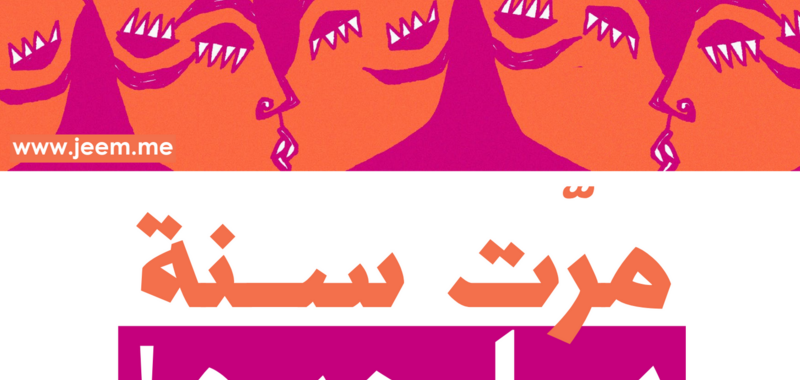مرّت سنة على انطلاق موقع جيم!
مرّت سنة على انطلاق موقع جيم، خُضنا خلالها العديد من التجارب والتحدّيات لخلق محتوى يحترم ذكاء القرّاء والتطرّق إلى مواضيع جدليّة من زوايا مختلفة. المواد التي ننشرها مُنحازة إلى الحريّات الفرديّة وتدافع عن حقّنا الأساسيّ في الاختلاف. نحاول إنتاج محتوى رقمي حول الجندر والجنسانيّة والجنس يهتمّ بالمضامين السمعيّة البصريّة ويؤسّس لكتابة جديدة غير محايدة. كتابة تؤمن بأنّ الصحافيّ (ة) أو الكاتب (ة) يخلق المعنى من خلال تماهيه وتورّطه مع الموضوع. لذلك نحن نهتمّ بالتجارب الشخصيّة ولا نعتبرها أقلّ قيمة من المقالات التحليليّة والنقديّة. مرّت سنة على انطلاق جيم، ومازلنا نتحسّس طريقنا ونحاول أن نتطوّر ويعود الفضل إلى كلّ من خصّص جزءً من وقته لقراءة مقالاتنا والتعليق عليها، وإلى كلّ شركائنا والمساهمين والمساهمات بنصوصهم (ن) ومقالاتهم (ن). هذه المطويّة هدية من فريق جيم إليكم (ن).
لتنزيل المطويّة/ Zine انقر/ي على السهم على هامش النص.
يرجى طباعة المطبوعة بحجم A2
لطيّ المطبوعة ممكن مشاهدة الفيديو التالي:

Add new comment